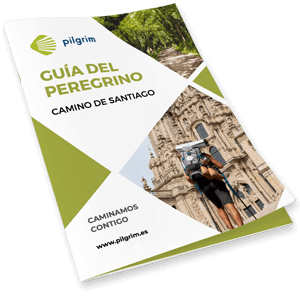Santiago de Compostela
Santiago de Compostela
- Inhabitants 95.612
- Province: A Coruña
Compostela is considered the biggest village in the world, being at the same time one of the smallest cities. The warmth of its people, the landscaped corners, and the historic center built stone by stone around the Cathedral all turn this small city into something truly remarkable. Monte do Gozo gives every pilgrim arriving on the French Way an indescribable feeling as it is the first time they can glimpse the Cathedral towers.
Local Festival
July 25: Santiago Apostle Festival
Local Police
981 542 323
Civil Protection
981 543 105
Civil Guard
981 547 654
Firefighters
981 542 446
Health Center
981 577 670
City Council
981 542 300
Tourism
981 555 129
Rua do Vilar, 63
902 332 010
Rua do Vilar, 30-32
Location
How to get there
The main way to reach this town is via the AP-9 motorway, which connects A Coruña and Vigo, or the AP-53, linking Ourense and Santiago. There is also the AG-56 connecting Noia with Santiago and the A-54 that links Lugo with the capital. In addition, many secondary and local roads allow access from any surrounding Galician town or from Costa da Morte.
Santiago also has well-connected train and bus stations with the main Galician and Spanish cities, as well as with other important locations. Moreover, several lines connect with countries such as Belgium, Germany, France, the Netherlands, Switzerland, Romania, and Portugal. The city boasts the most important airport in Galicia, with both national and international connections.
History / Culture
What to see
Santiago Cathedral
Santiago’s Cathedral is the most excellent piece of Romanesque art in Spain. It is the final destination of all the routes that lead to Santiago, which over the centuries have inspired countless pilgrims to journey towards the Apostle’s tomb.
SEE MORE
San Martín Pinario
San Martín Pinario monastery is one of the three oldest medieval institutions in Santiago. Together with the Cathedral and the Antealtares monastery, it forms the very foundation of the current city and its Jacobean character.
We will try to outline its origins in the history of Christianity in Galicia and its connection with the Jacobean phenomenon and the cult of the Apostle Santiago in Western Europe.
SEE MORE
Mercado de Abastos
The old market in Mercado de Abastos was built around the middle of the 20th century and is located in the heart of the city. However, its history cannot be told without mentioning its precursor, the old City Market.
This old market was very important as it hosted various traditional street markets that once existed in Santiago. In 1937, the original market was demolished to build the current Plaza de Abastos, where the present market building stands.
SEE MORE
Gastronomy
What to eat
Meats
Santiago is a city where barbecues and rotisseries are highly valued for their quality. Beef and pork arrive daily from nearby farms and livestock operations.

Seafood
Galicia is the kingdom of seafood par excellence. Top-quality seafood from the Galician coasts reaches markets, supermarkets, and restaurants across Spain. That is why it is essential to try the fresh seafood in Santiago, where you can see large tanks full of live specimens while strolling along Franco street. Scallops, which represent the Saint James shell, lobsters, crabs, and barnacles are dishes you should not miss.

Piedras de Santiago (Santiago stones)
These particular chocolates are made traditionally with almonds and chocolate. It is believed that the first recipe for this candy was developed with the introduction of chocolate from America and, thanks to pilgrims, became known throughout Europe.

Fresh products
Galicia, and specifically the city of Santiago, is renowned for the importance of its famous fresh markets. The market on Ameás street is one of the most visited places in the city. It is open from Monday to Saturday from early morning, allowing early risers to purchase freshly harvested products without enduring the midday rush.

Santiago’s cake
Santiago’s cake is a traditional dessert of Santiago and the Saint James Way. It is an almond cake made without flour. It can be found in nearly every confectionery in Santiago and along the Way.
Although little is known about pastry in Medieval Santiago, evidence dating back to 1577 confirms the existence of an almond dessert then called “royal cake”. It was Luis Bartolomé de Leybar who, in his recipe book, wrote the instructions to make this dessert in 1838. It was at Casa Mora confectionery in Santiago where the silhouette of the Santiago cross began to be drawn on the cake.

Parties and holidays
Every July 25th, the day of the Apostle Santiago – patron saint of Spain, Galicia, and the city – is celebrated. In addition, small local festivals are held in honor of the patron saints of the oldest neighborhoods.
The Ascension is another of the city’s most important celebrations, taking place on the sixth Thursday after Easter.

